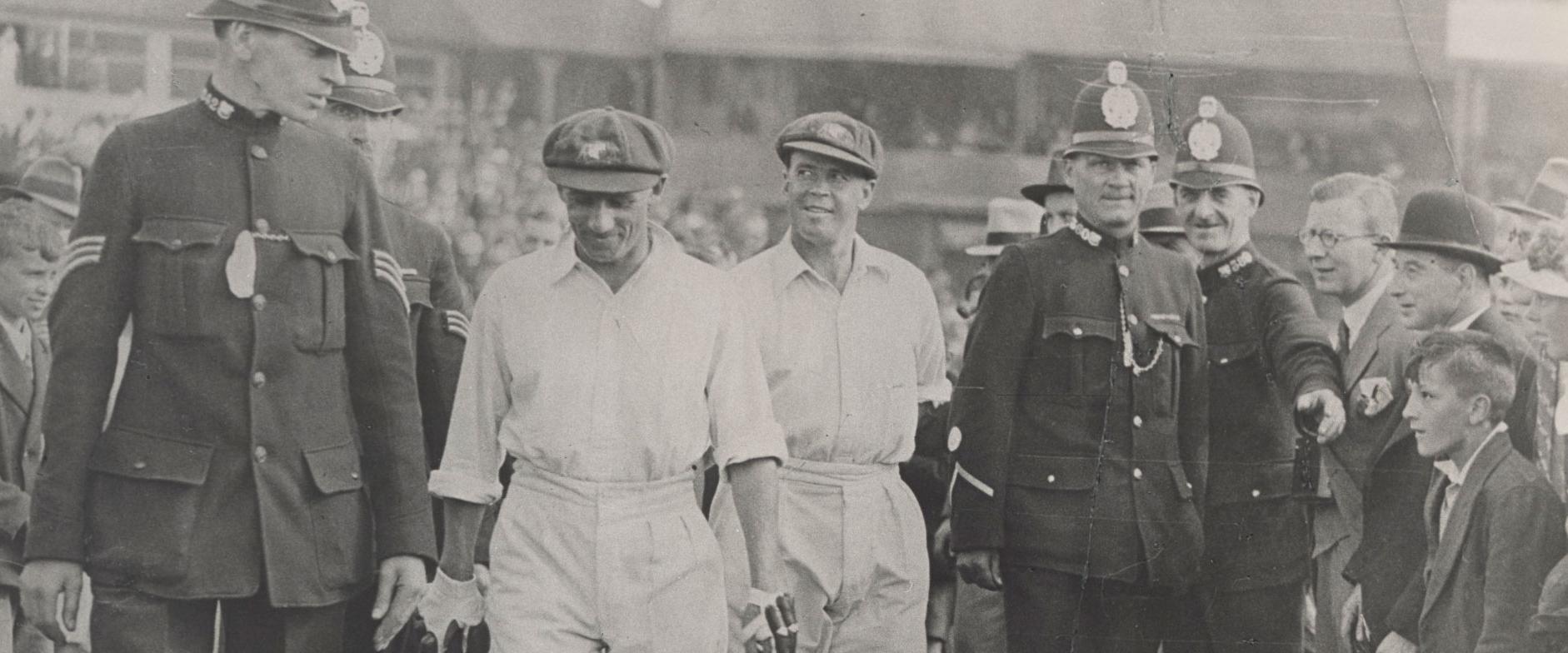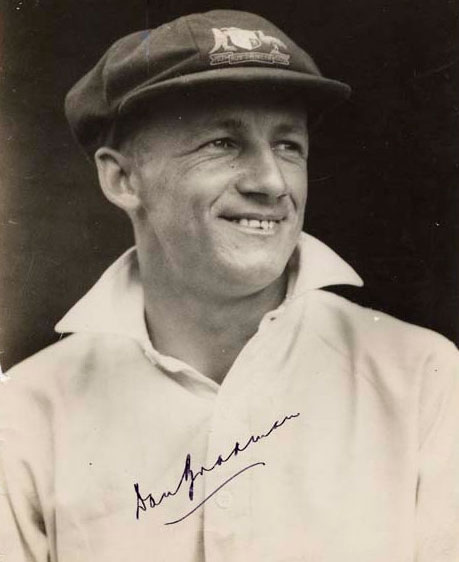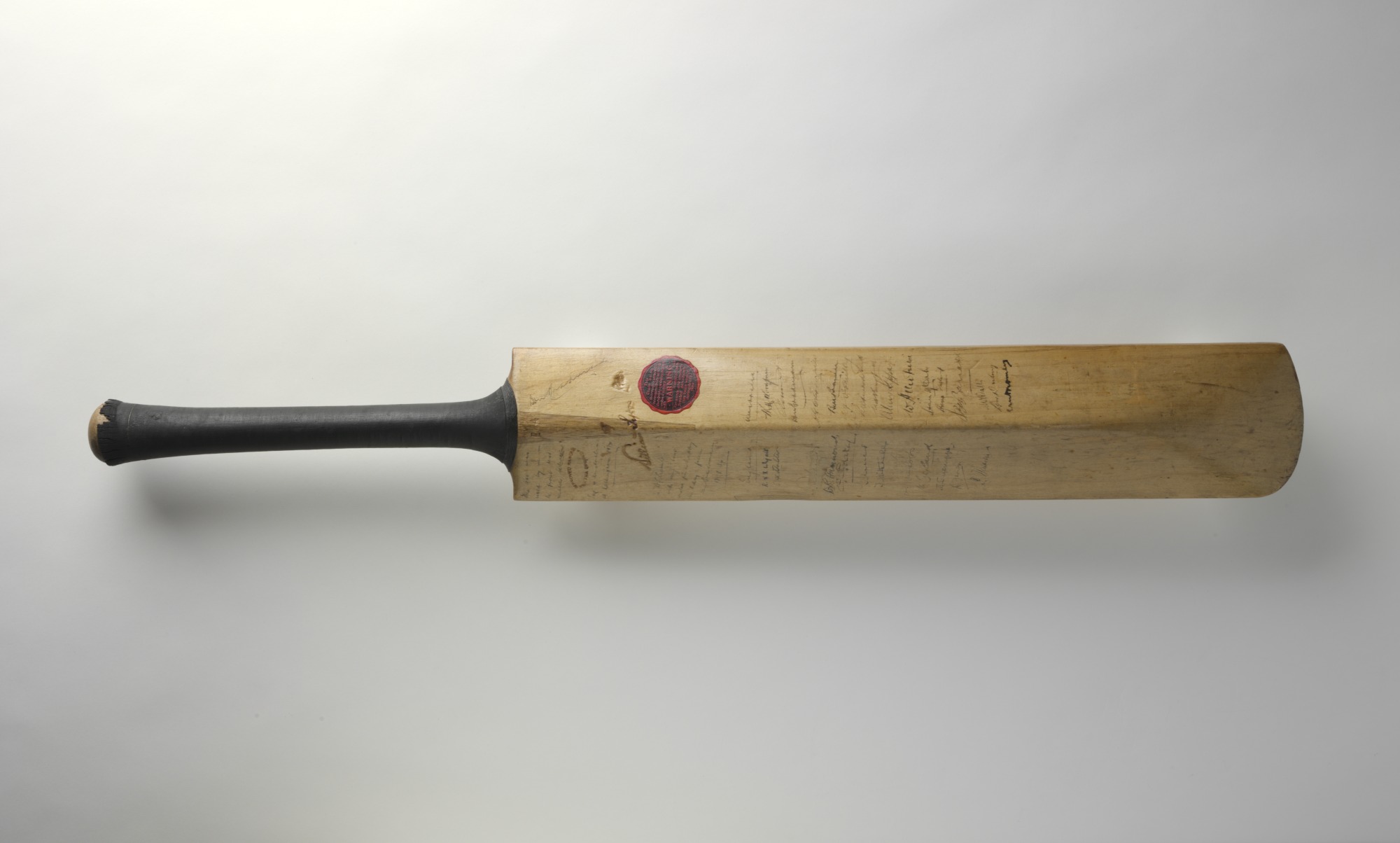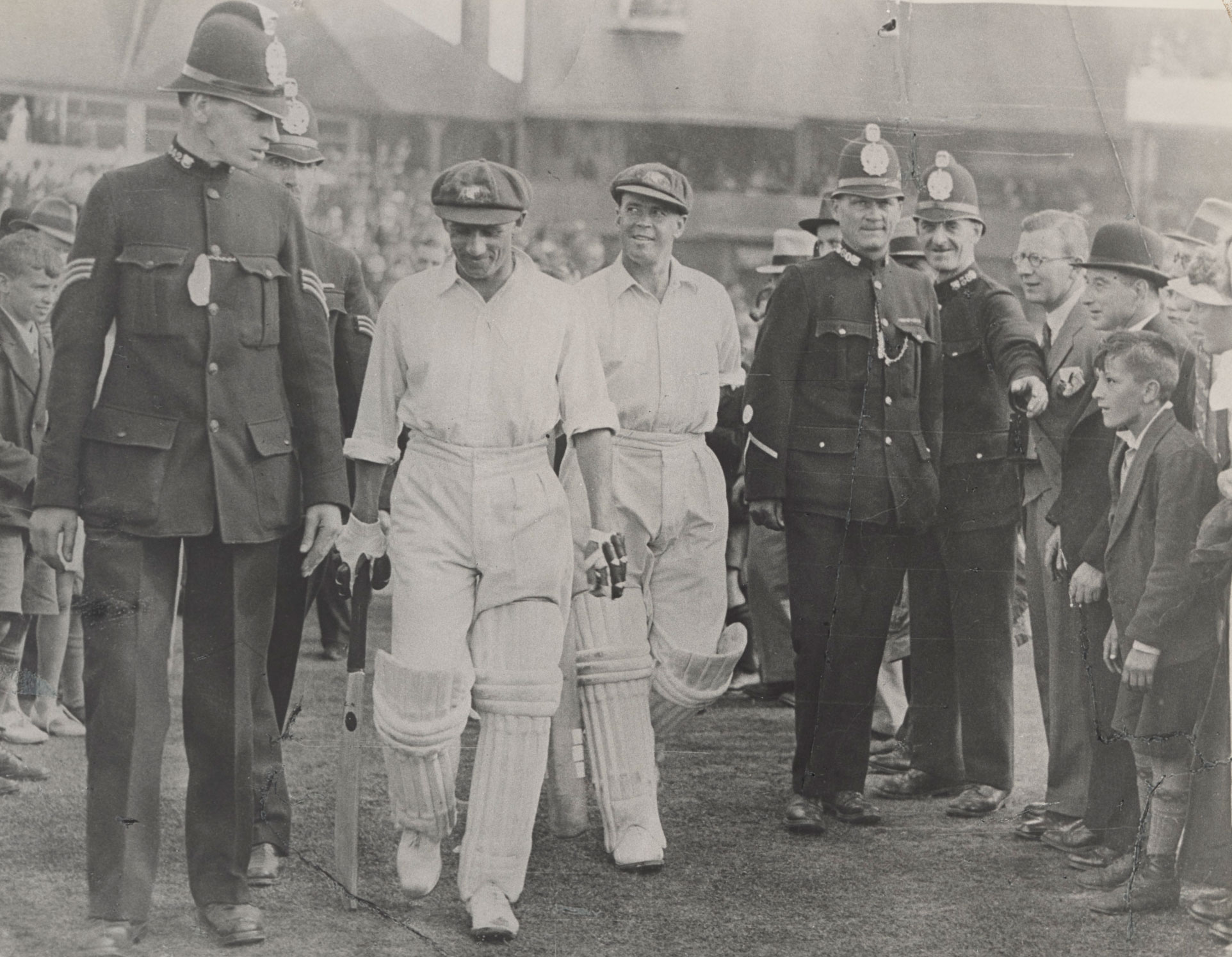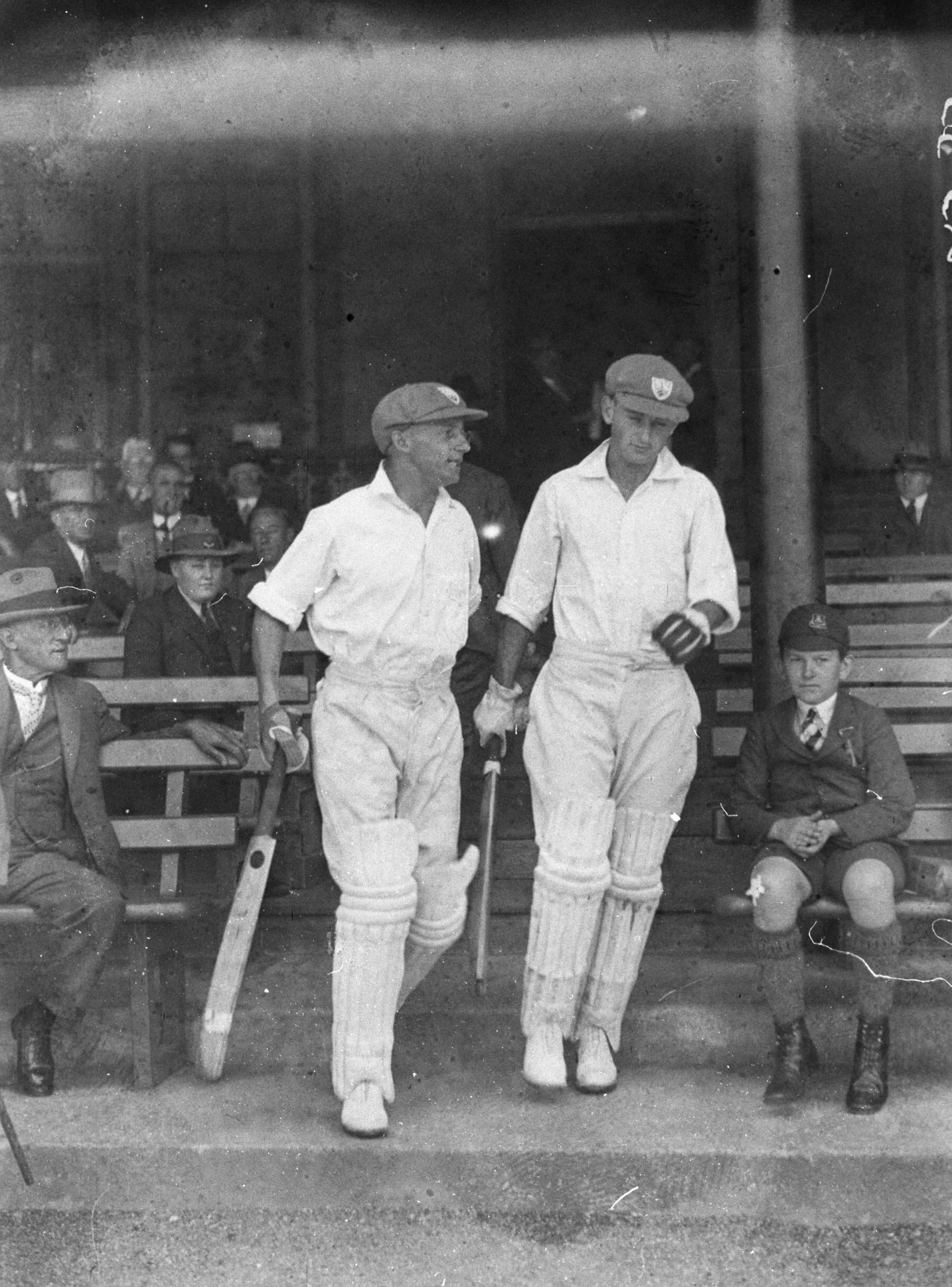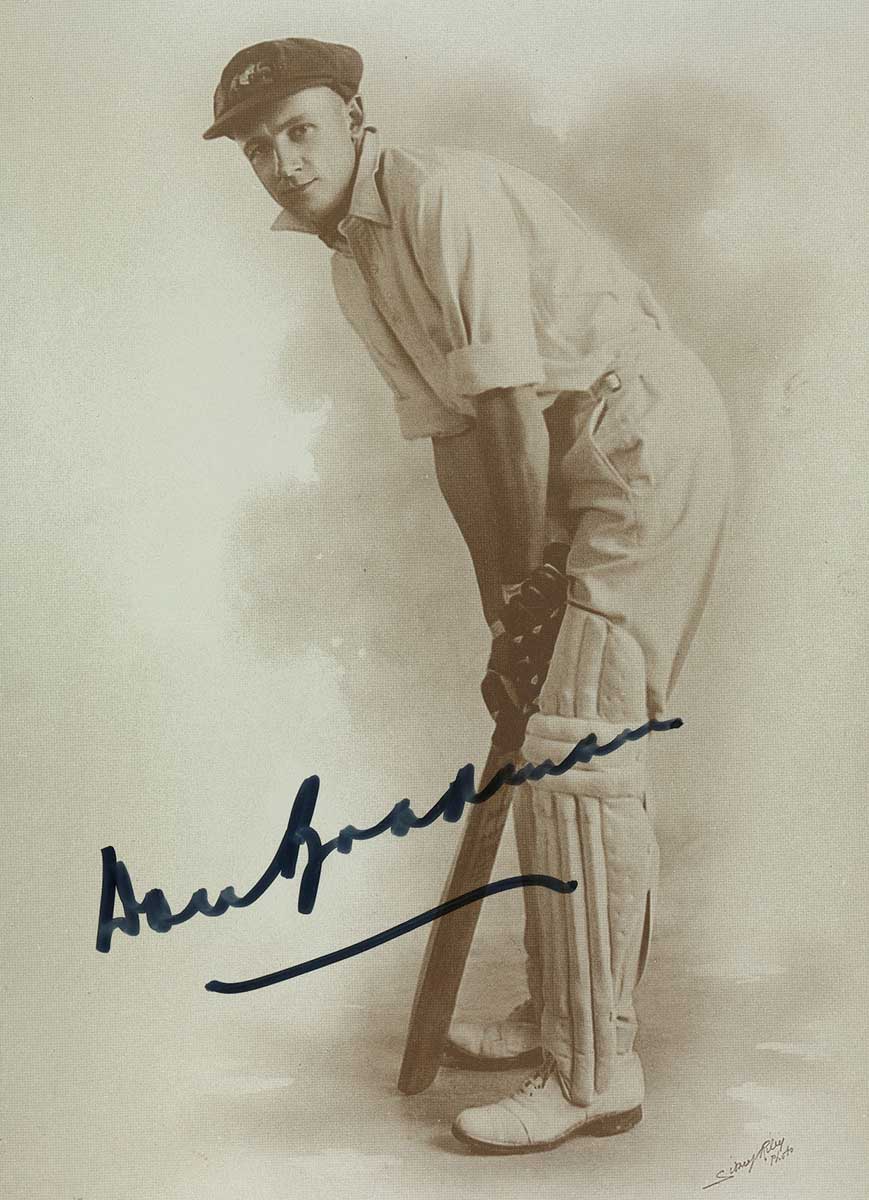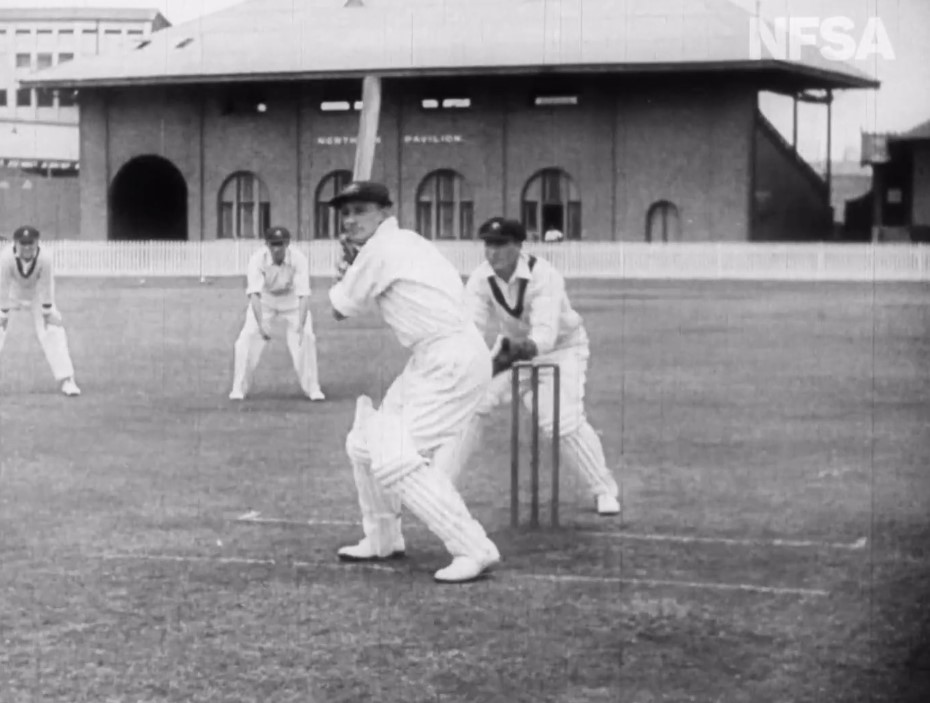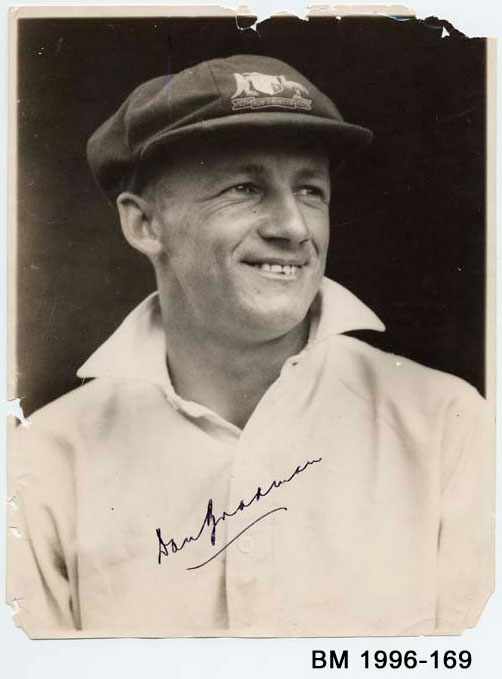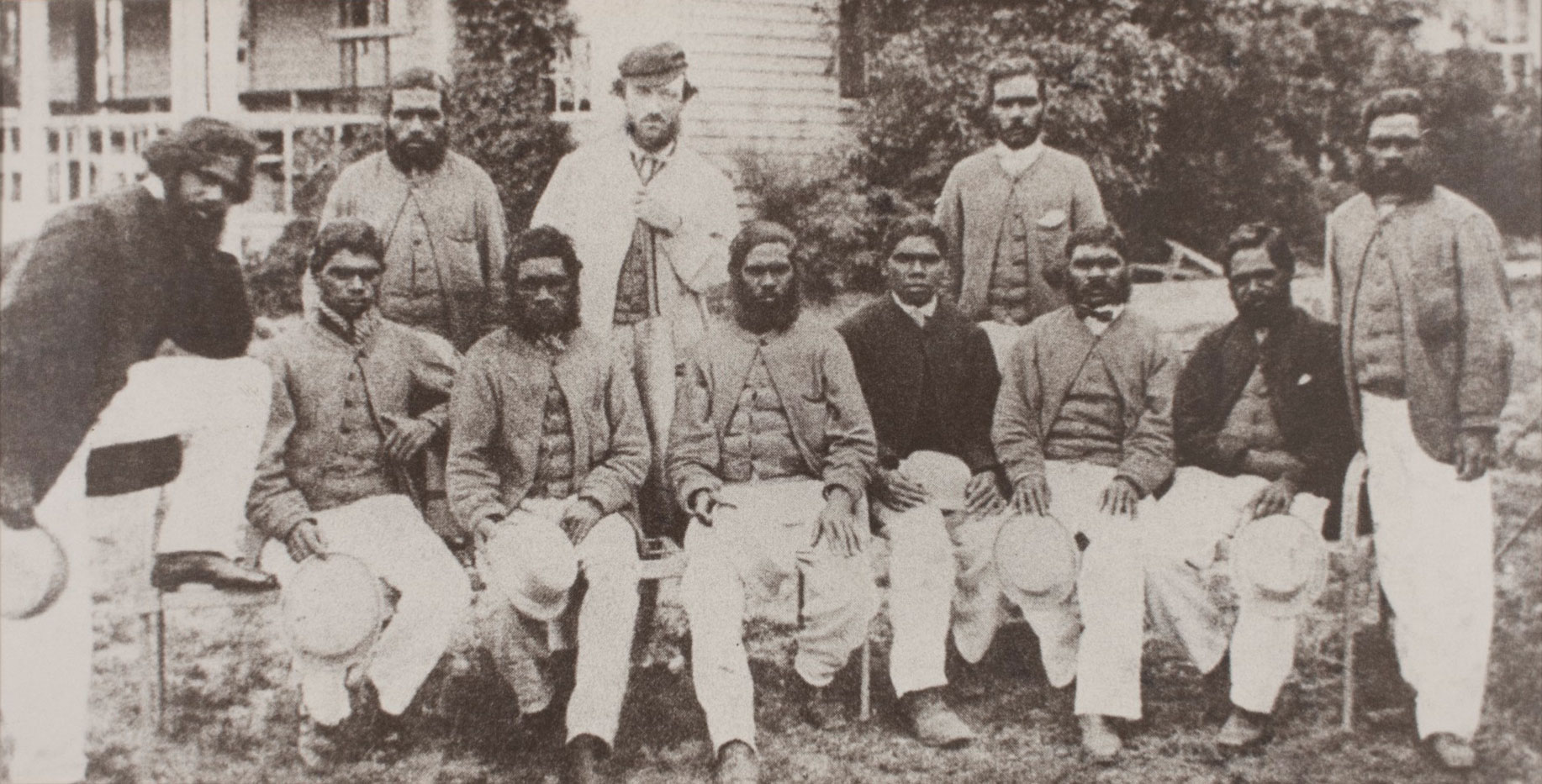Australia’s greatest cricketer
1928: Donald Bradman’s first international cricketing century
Australia’s greatest cricketer
1928: Donald Bradman’s first international cricketing century
In a snapshot
On 29 December 1928 Don Bradman scored his first international test century in a game against England at the Melbourne Cricket Ground (MCG). He was the second youngest person to achieve this. Bradman went on to become Australia’s greatest batsman and one of the best cricketers in the sport’s history. His test batting average of 99.94 is still the highest in the world and is unlikely to be beaten.
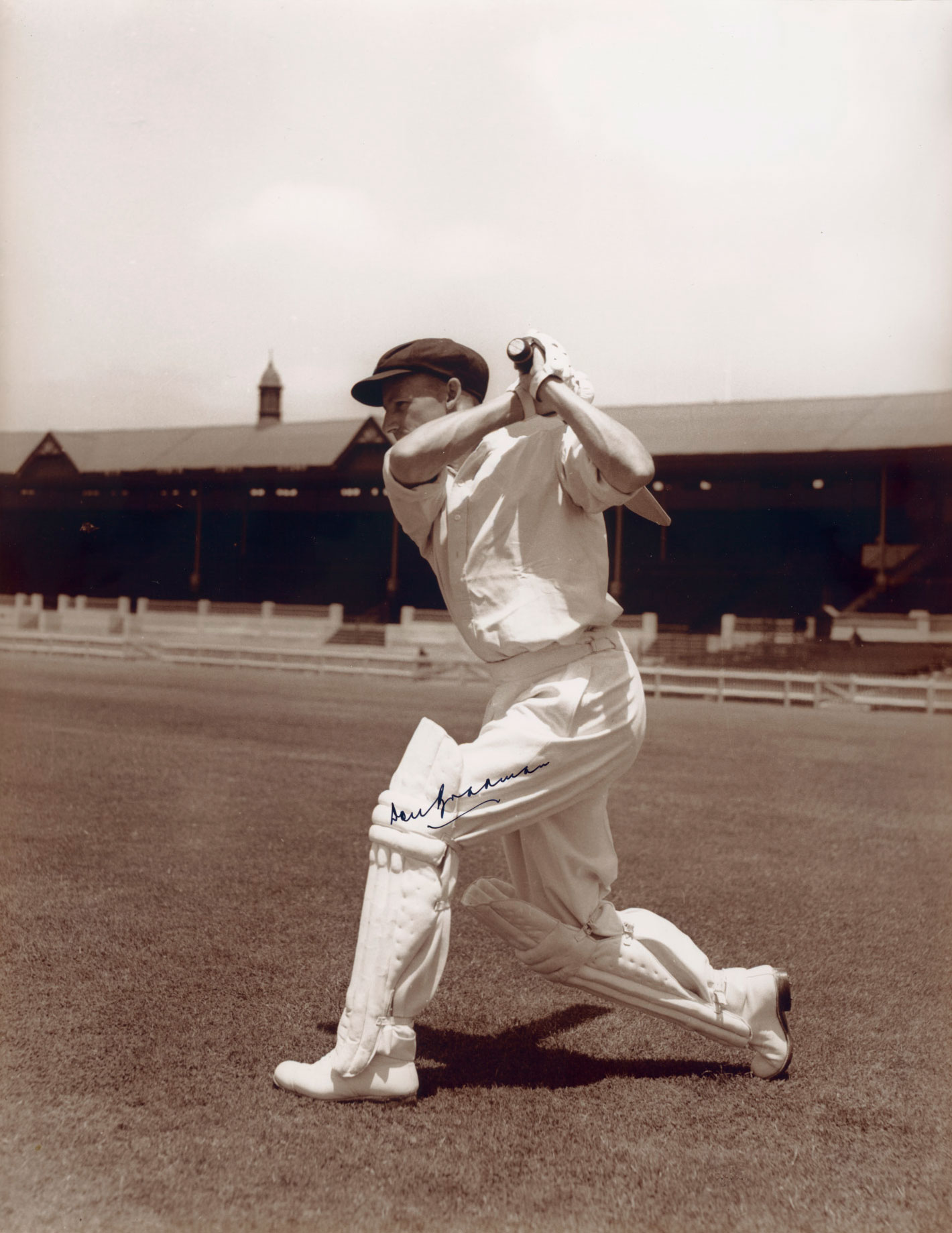
 Can you find out?
Can you find out?
1. How did Bradman practice cricket at home when he was growing up?
2. What do you think Prime Minister Robert Menzies meant when he said that Don Bradman had ‘got it’?
3. Why was Bradman an important person during the Great Depression?
Who was Don Bradman?
Donald George Bradman was born in Cootamundra in New South Wales on 27 August 1908. In 1911 his family moved to Bowral. Bradman was good at sport as a child and he loved cricket. He would practice batting for hours in the backyard. Using a cricket stump as a bat, he hit a golf ball against a water tank, trying to hit the ball again as it bounced off the tank.
In 1920 when he was 12 years old, Bradman played his first senior game of cricket in Bowral. He soon became a regular member of the Bowral team, and by the middle of the 1920s he was making big scores. He also played competitive tennis between 1923 and 1926.
In 1926 Bradman travelled to Sydney to try out at the Sydney Cricket Ground. He did well and was chosen to play for the first-grade St George District Cricket Club team.
Research task
Don Bradman’s test batting average could have been even more impressive if he had got a better score in his last test match in 1948. Do some research to find out what score he made in that match, and who the Australians were playing against.
How did Bradman win a place in the Australian team?
In December 1927 Bradman was selected to play for New South Wales in the Sheffield Shield competition against other states. He scored 118 runs in his first match. He kept playing well for New South Wales and scored more centuries in 1928.
In the same year the English cricket team toured Australia. New South Wales played the English team and Bradman made two good scores: 87 and 132.
After this good performance Bradman was selected to play in the Australian team against England. Bradman didn’t do well in his first international test match. He made scores of only 18 and one.
Research task
Bradman might have been Australia’s best cricketer, but who were Australia’s first international cricketers? Hint: you can find this out by looking at another Defining Moment:
‘The Young Australia was struck by three hammer blows in its first half century (World War One, the Depression and World War Two) … from the 1920s to the post-war years, Don Bradman acted as a unifier of the nation, a focus of its battered self-belief and damaged social fabric.’
Cricket historian Eric Midwinter, 2002, Wisden Cricketers’ Almanack


When did Bradman score his first international test century?
Bradman played well in the third test match against England at the Melbourne Cricket Ground. On 29 December 1928 he made his first century in an international test match, scoring 112 runs. At the time he was the second youngest person to score a test century.
The future Prime Minister Robert Menzies was watching in the crowd and said: ‘We’ll be watching this fellow for the next 20 years. Because he’s got it.’
Menzies was right. Bradman went on to represent Australia for 20 years and became the greatest test batsman of all time. He scored 6996 test runs and 28,067 first-class runs. He still holds the record for the highest test batting average at 99.94. Bradman died in 2001.
Read a longer version of this Defining Moment on the National Museum of Australia’s website.
 What did you learn?
What did you learn?
1. How did Bradman practice cricket at home when he was growing up?
2. What do you think Prime Minister Robert Menzies meant when he said that Don Bradman had ‘got it’?
3. Why was Bradman an important person during the Great Depression?






